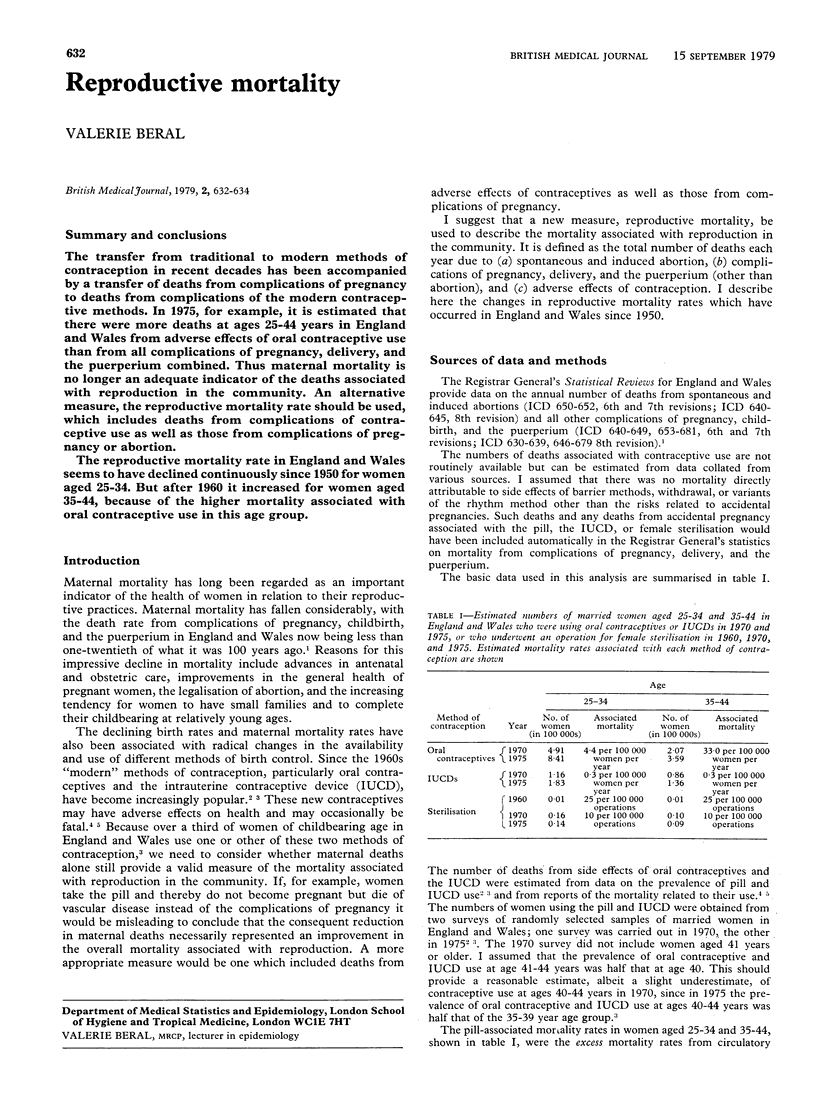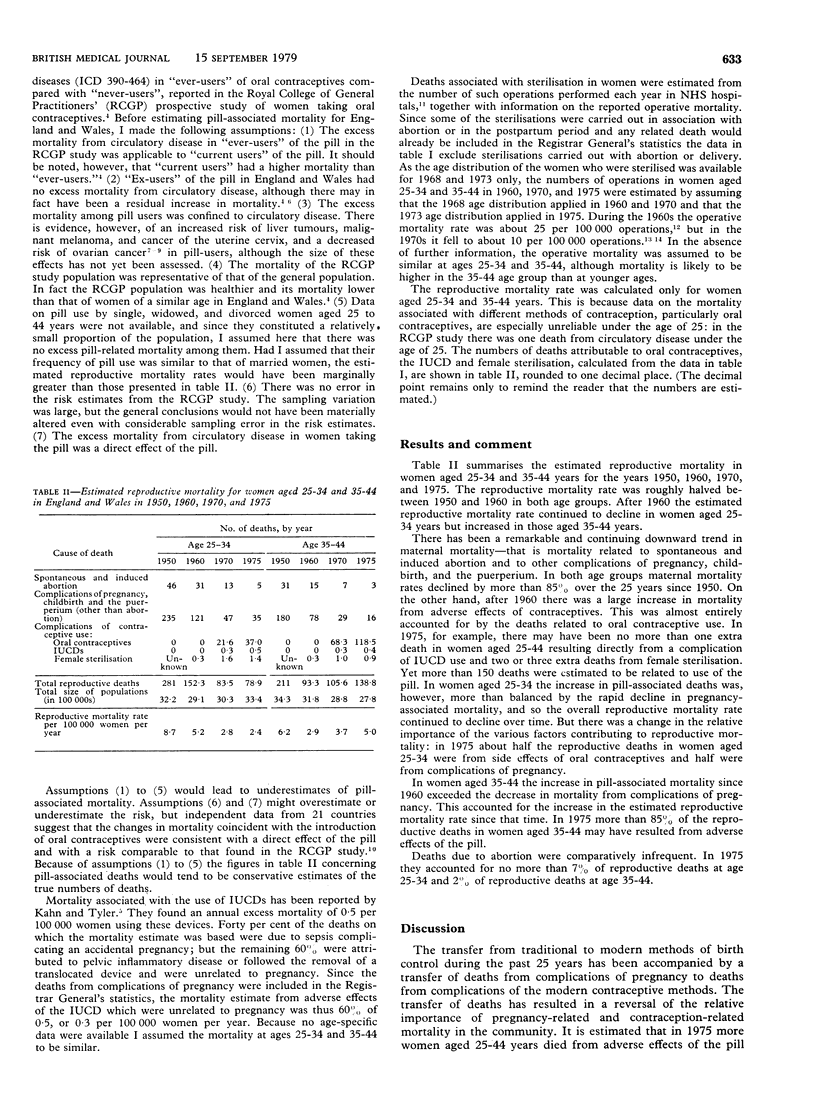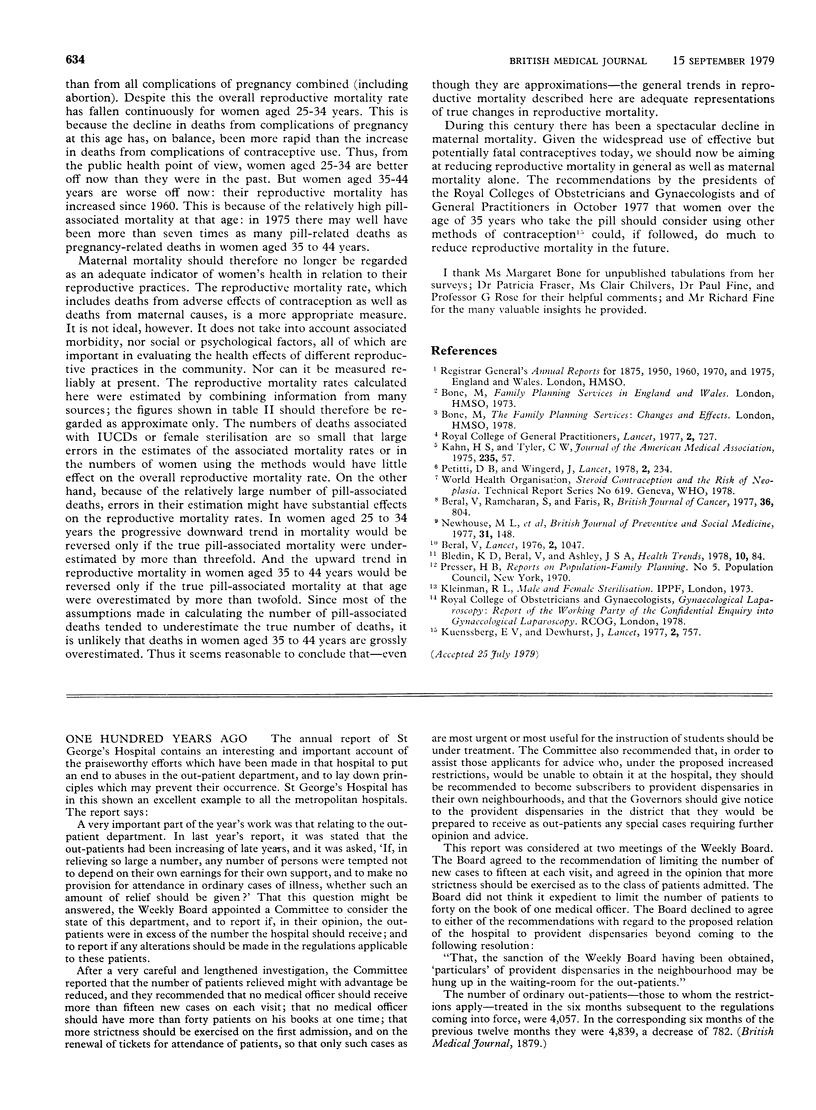Abstract
The transfer from traditional to modern methods of contraception in recent decades has been accompanied by a transfer of deaths from complications of pregnancy to deaths from complications of the modern contraceptive methods. In 1975, for example, it is estimated that there were more deaths at ages 25-44 years in England and Wales from adverse effects of oral contraceptive use than from all complications of pregnancy, delivery, and the puerperium combined. Thus maternal mortality is no longer an adequate indicator of the deaths associated with reproduction in the community. An alternative measure, the reproductive mortality rate should be used, which includes deaths from complications of contraceptive use as well as those from complications of pregnancy or abortion. The reproductive mortality rate in England and Wales seems to have declined continuously since 1950 for women aged 25-34. But after 1960 it increased for women aged 35-44, because of the higher mortality associated with oral contraceptive use in this age group.
Full text
PDF


Selected References
These references are in PubMed. This may not be the complete list of references from this article.
- Beral V. Cardiovascular-disease mortality trends and oral-contraceptive use in young women. Lancet. 1976 Nov 13;2(7994):1047–1052. doi: 10.1016/s0140-6736(76)90966-1. [DOI] [PubMed] [Google Scholar]
- Beral V., Ramcharan S., Faris R. Malignant melanoma and oral contraceptive use among women in California. Br J Cancer. 1977 Dec;36(6):804–809. doi: 10.1038/bjc.1977.265. [DOI] [PMC free article] [PubMed] [Google Scholar]
- Petitti D. B., Wingerd J. Use of oral contraceptives, cigarette smoking, and risk of subarachnoid haemorrhage. Lancet. 1978 Jul 29;2(8083):234–235. doi: 10.1016/s0140-6736(78)91745-2. [DOI] [PubMed] [Google Scholar]


